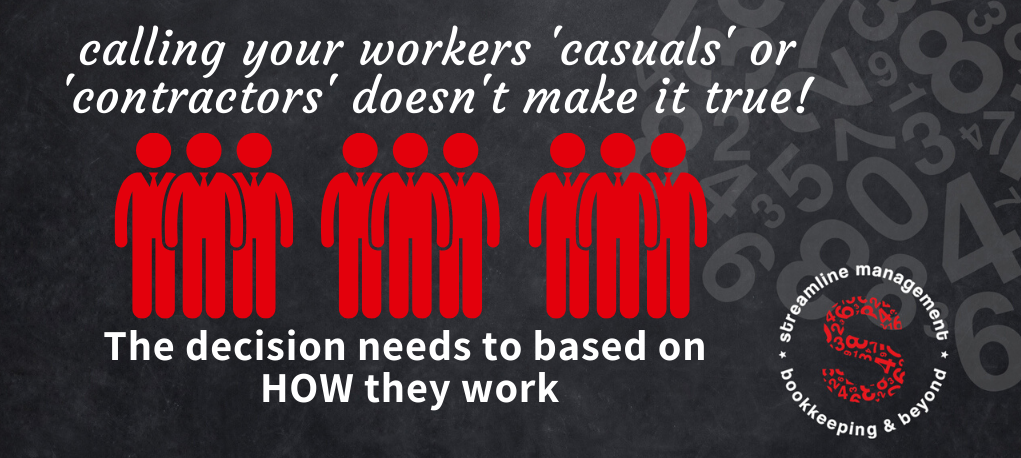Another court decision has called into question how employees are classified.
To paraphase the decision: calling a worker a casual doesn’t make them a casual.
The same applies for contractors.
When you classify the nature of a worker you need to look at how they do their job.
Someone coming into your workplace, using your tools of trade, working 9-5 Monday to Friday, month after month is unlikely to be a casual or a contractor.
Fairwork defines a casual
‘A casual employee does not have a firm commitment in advance from an employer about how long they will be employed for, or the days (or hours) they will work. A casual employee also does not commit to all work an employer might offer.
For example, an employee who works to a roster that could change each week and can refuse or swap shifts is casual.
A casual employee:
– has no guaranteed hours of work
– usually works irregular hours
– doesn’t get paid sick or annual leave
– can end employment without notice, unless notice is required by a registered agreement, award or employment contract.’
Paying leave entitlements for a worker you thought was casual will make them a lot more expensive than you budgeted for!
Difference between employees and contractors
ATO website says: An employee works in your business and is part of your business. A contractor is running their own business.
Six factors that, taken together, determine whether a worker is an employee or contractor for tax and super purposes. Follow the links in the table for more information about each factor.
https://www.ato.gov.au/business/employee-or-contractor/difference-between-employees-and-contractors/
It’s against the law for a business to incorrectly treat their employees as contractors. Businesses that do this are illegally lowering their labour costs.
Penalties and extra costs for classifying your workers incorrectly could severely impact your business. Review the real situation of each worker before you start your working relationship!


